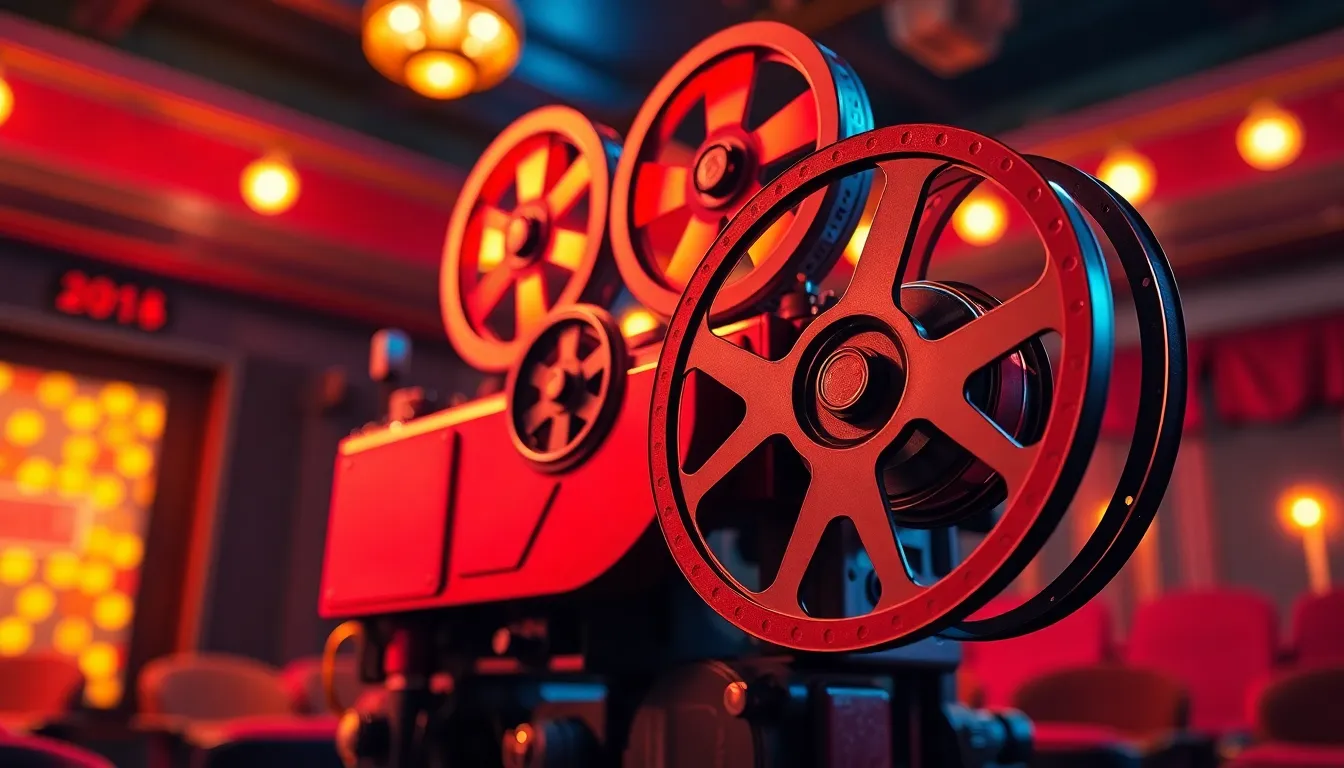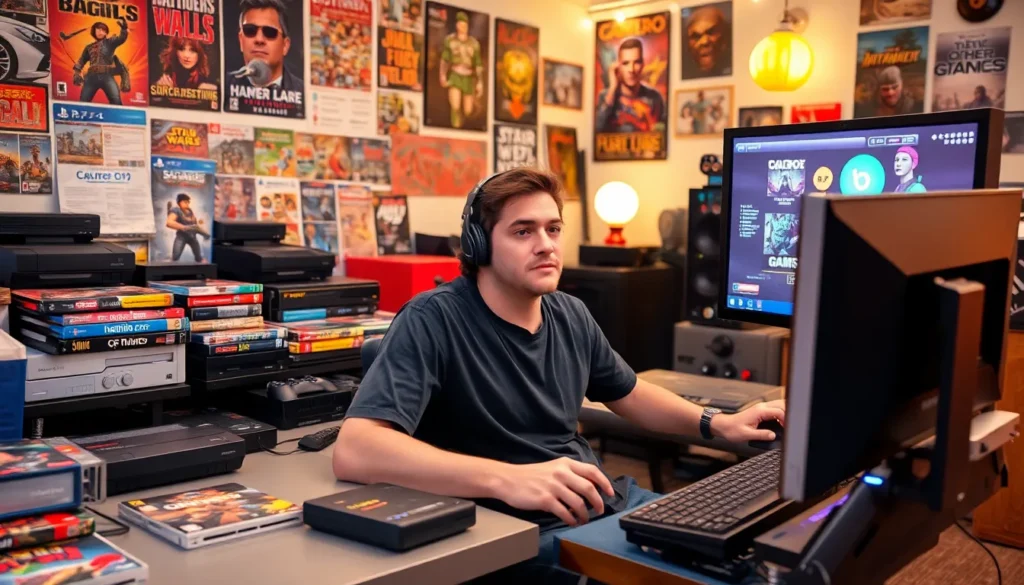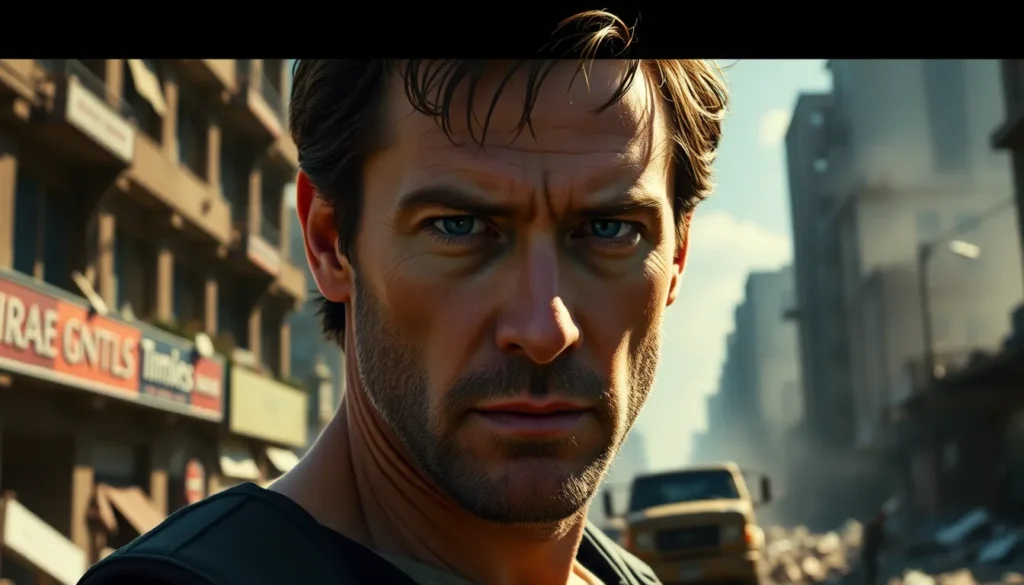Table of Contents
ToggleImagine sitting in a dimly lit theater, popcorn in hand, and suddenly, the screen bursts into a riot of colors. It’s hard to believe that once upon a time, movies were just shades of gray. But when it comes to the first movie in color, the answer might surprise even the most seasoned film buffs.
The Evolution of Color in Film
Color in film has undergone significant transformation since the inception of cinema. While early films were predominantly black and white, experiments with color began as early as the 1890s. Techniques such as hand painting and tinting frames provided rudimentary color effects. Notable examples from this era include “The Adventures of Prince Achmed” (1926), which featured intricate colored silhouettes.
The introduction of two-color processes in the 1920s marked a turning point. Films like “The Toll of the Sea” (1922) utilized the two-color techniques, presenting limited color palettes. Movies during this period showcased vivid reds and greens but lacked full spectrum representation.
The 1930s brought advancements with the introduction of the three-color process. Technicolor’s innovation, beginning with “Becky Sharp” (1935), allowed filmmakers to utilize more vibrant and diverse hues. This method quickly gained popularity, evident in classics such as “The Wizard of Oz” (1939) and “Gone with the Wind” (1939).
After World War II, color film technology improved further, leading to widescreen formats and enhanced production methods. The 1950s and 1960s saw a boom in the use of color in cinema, with films like “West Side Story” (1961) and “Lawrence of Arabia” (1962) demonstrating stunning visual storytelling.
By the late 20th century, advances in digital technology revolutionized color filmmaking. Digital cameras and editing software provided filmmakers with unprecedented control over color grading, allowing for richer imagery. Today, color grading plays an essential role in post-production, enabling the creation of visually striking cinematic experiences.
Overall, the evolution of color in film represents a significant aspect of cinema’s development, showcasing technological advancements and artistic innovation throughout its history.
Early Attempts at Color Film

Early efforts in color film set the stage for contemporary cinema. Various techniques emerged throughout the late 19th and early 20th centuries, pushing the boundaries of visual storytelling.
The Kinemacolor Breakthrough
Kinemacolor debuted in 1908 as the first commercially successful two-color process. This innovation allowed filmmakers to produce moving images with color by combining two black-and-white films shot through different colored filters. “A Visit to the Seaside” (1908) became one of the first films to utilize Kinemacolor, showcasing a harmonious blend of blue and yellow hues. This process captivated audiences and opened new avenues for filmmakers, despite its limitations, as it could only reproduce a fraction of the visible color spectrum.
Technicolor’s Impact
The introduction of Technicolor in the 1920s revolutionized color filmmaking. Initially launched as a two-color process, it evolved into the three-color system by the mid-1930s, providing a wider color range and improved brightness. “Becky Sharp” (1935) marked the first feature film shot entirely in three-color Technicolor, setting a new standard for vibrant visuals. This advancement enabled iconic films such as “The Wizard of Oz” (1939) and “Gone with the Wind” (1939) to capture audiences with their breathtaking color palettes, solidifying Technicolor’s status in cinematic history.
What Was the First Movie with Color?
The journey into color filmmaking began with early experiments that laid the groundwork for the colorful cinematic experiences enjoyed today. Several films made history by integrating color into their narratives, but standout examples highlight distinct milestones.
Case Study: “The Toll of the Sea”
“The Toll of the Sea” (1922) stands as a pivotal film, showcasing the two-color process that marked a crucial transformation in cinema. This feature was among the first to utilize the Prizma Color process, translating the vibrant hues of a romantic story onto the silver screen. With underwater sequences and striking visuals, “The Toll of the Sea” attracted audiences and demonstrated the potential of color in enhancing storytelling. Its production not only captivated viewers but also inspired future filmmakers to explore the possibilities of color film.
The Role of “Wizards of the Coast”
“Wizards of the Coast” played an influential part in advancing color technology in cinema, particularly in the realm of animated films. The company’s dedication to innovative storytelling and visual representation enhanced the color palette in animation. This commitment helped bridge the gap between traditional filmmaking and vibrant character animation, reinforcing the idea that color significantly impacts storytelling. By harnessing new technology and techniques, “Wizards of the Coast” helped shape a new era where color became a fundamental aspect of cinematic experience, inviting creativity and exploration in visual narratives.
The Influence of Color on Cinematography
Color significantly transformed cinematography, enhancing storytelling and audience engagement. Technological advancements in color processes allowed filmmakers to express emotions visually, complement narrative elements, and create immersive experiences.
Color’s introduction broadened the scope of visual storytelling. Early filmmakers utilized techniques like hand painting and tinting to evoke specific moods. The shift to two-color processes in the 1920s, as seen in “The Toll of the Sea” (1922), introduced richer visual narratives, enabling directors to convey themes more effectively.
The evolution of Technicolor marked a pivotal moment in cinematic history. Starting as a two-color process, Technicolor evolved into a three-color system by the 1930s, delivering brighter, more saturated visuals. The release of “Becky Sharp” (1935) showcased the full potential of this technology, influencing future productions and setting a standard for visual aesthetics.
The post-war era witnessed color technology’s rapid development, resulting in vibrant films like “West Side Story” (1961) and “Lawrence of Arabia” (1962). The flourishing era of color cinema also inspired innovative uses of color to reflect character arcs and societal themes, enhancing emotional resonance.
Digital technology revolutionized color grading by the late 20th century, offering filmmakers unprecedented control over color palettes. Modern films leverage advanced color correction techniques, enabling the creation of unique visual styles and the ability to modify aesthetics during post-production.
Color’s enduring influence on cinematography symbolizes the convergence of technology and artistic vision. From early experiments to today’s digital enhancements, color remains essential in shaping cinematic experiences and storytelling.
The journey of color in film reflects a remarkable evolution that reshaped the cinematic landscape. From the early experiments with hand-painted frames to the groundbreaking introduction of Technicolor, filmmakers have continually pushed the boundaries of visual storytelling. The first color movies laid the foundation for a vibrant future in cinema, captivating audiences and enhancing emotional depth.
As technology advanced, so did the ways in which color could be used to convey complex narratives and character development. Today, color remains a vital element in filmmaking, enriching the viewer’s experience and bringing stories to life in ways that black and white films could never achieve. The impact of these pioneering color films continues to resonate, marking a significant chapter in the history of cinema.







